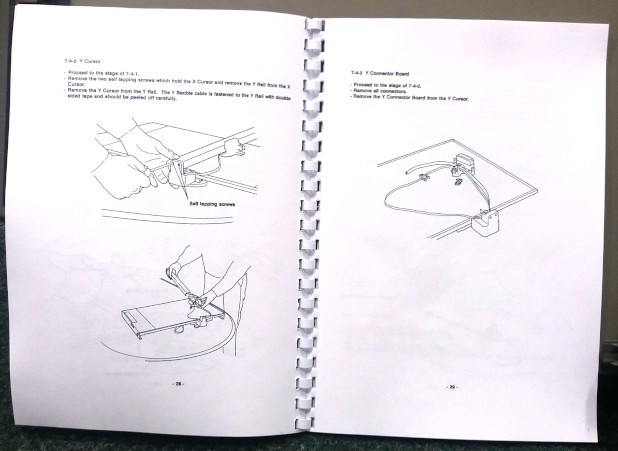I was looking for a used pen plotter for a few months. I set a max price point at 50 USD, so I was looking for a flea market kind of device, without any warranty that it will be operating out of the... cellar. I knew about Roland DXY series of plotters (which you can find here as well) and I hoped to find one reasonably priced. Without any luck. I found a few, but they sold around 100 USD, and this was too much for me.
And then I got some luck. I found a Mutoh iP-220 plotter. I haven't heard about this brand before, but as it seems it's well known in the plotter world. Of course seller didn't knew if the device is working or not nor had any documentation. I got in contact with european distributor of Mutoh, but they told me that this device is not supported for about 20 years and they don't have any drivers or manuals available. Well, that's not a surprise, but it was worth checking. But the price was in my budget, so I decided to take the risk.
Steps for the project:
- Find the manual.
- Get the device working.
- Connect plotter to the PC.
- Learn how to communicate with the device.
- Establish software stack to print creations.
 Szaja
Szaja






 David Shamblin
David Shamblin
 benjaminaigner
benjaminaigner
 RoGeorge
RoGeorge
 dearuserhron
dearuserhron